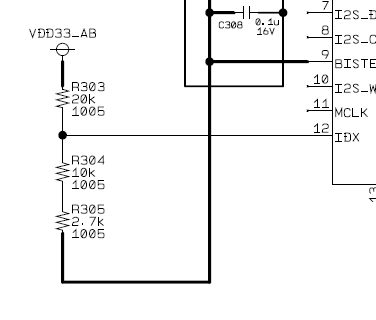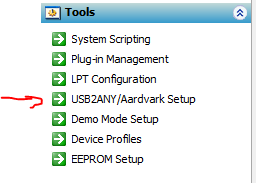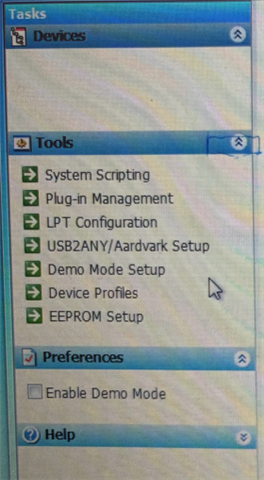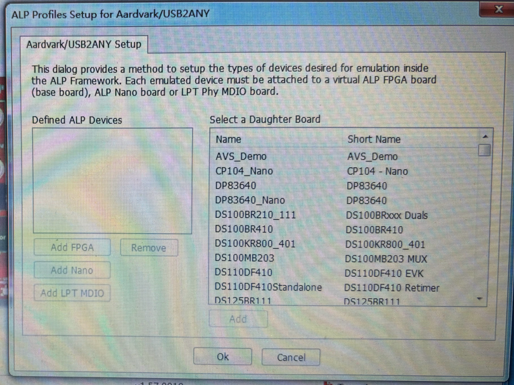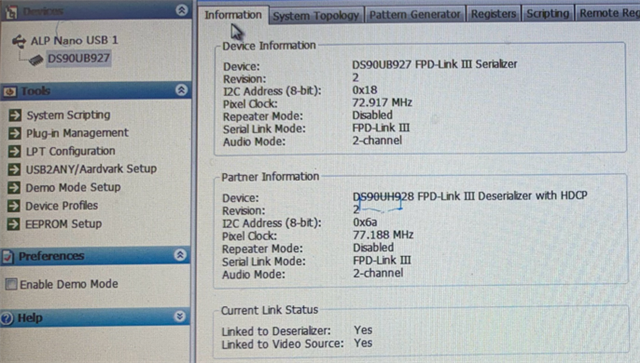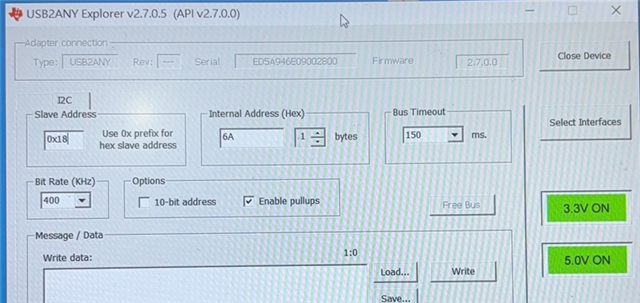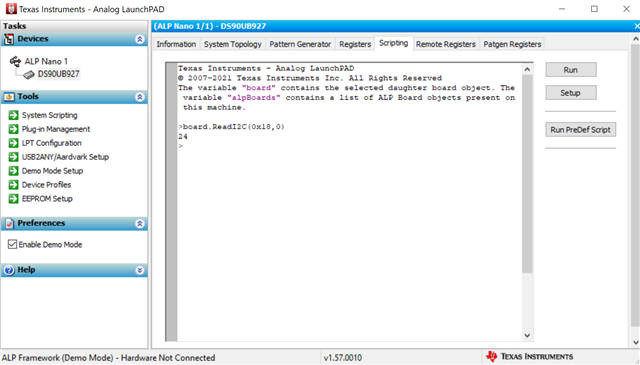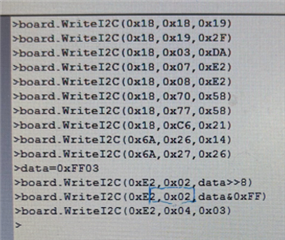Other Parts Discussed in Thread: ALP, USB2ANY,
Dear Sir
I would like to know how to access the deserializier(928) and MCU through serializer(927-evm).
hardware connection: signal generator(LVDS+I2C)→ 927-evm→ FPD_LINKⅢ→ deserializier(928) and MCU
Current situation:
1, ALP connection successful.
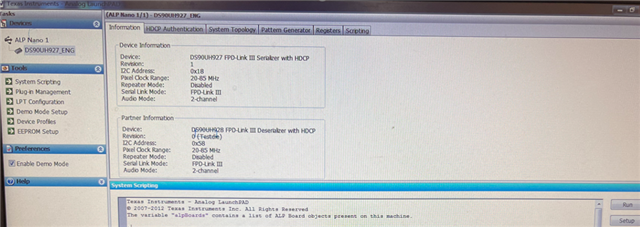
2, 927 setting register: 0x18 write OK
0x18, 0x18, 0x19, 0x2F
0x18, 0x03, 0xDA
0x18, 0x07, 0xE2, 0xE2
0x18, 0x70, 0x58
0x18, 0x77, 0x58
0x18, 0xC6, 0x21
3, 928 setting register: 0x6A write fail
0x6A, 0x26, 0x14, 0x26 NG
4, MCU setting register: 0xE2 write fail
0xE2, 0x02, 0xFF, 0x03 NG
0xE2, 0x04, 0x03 NG
PS: lock signal is high when power on.
Thank you very much.
Looking forward to your reply


